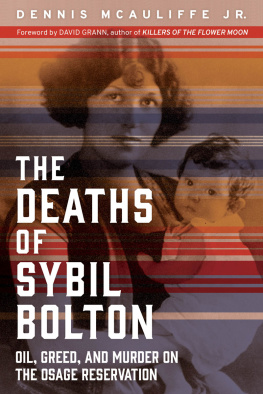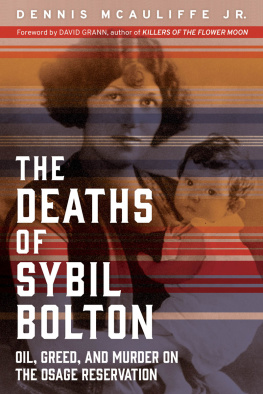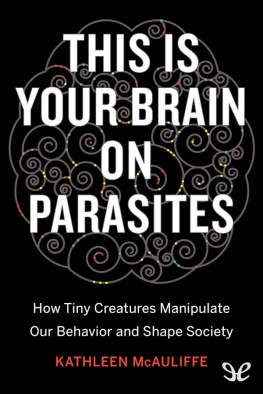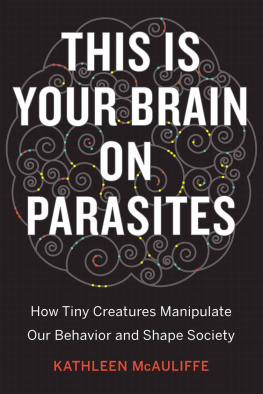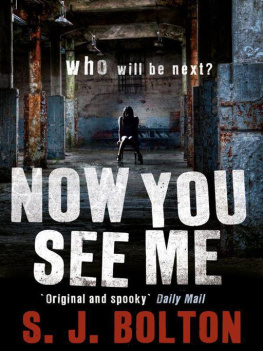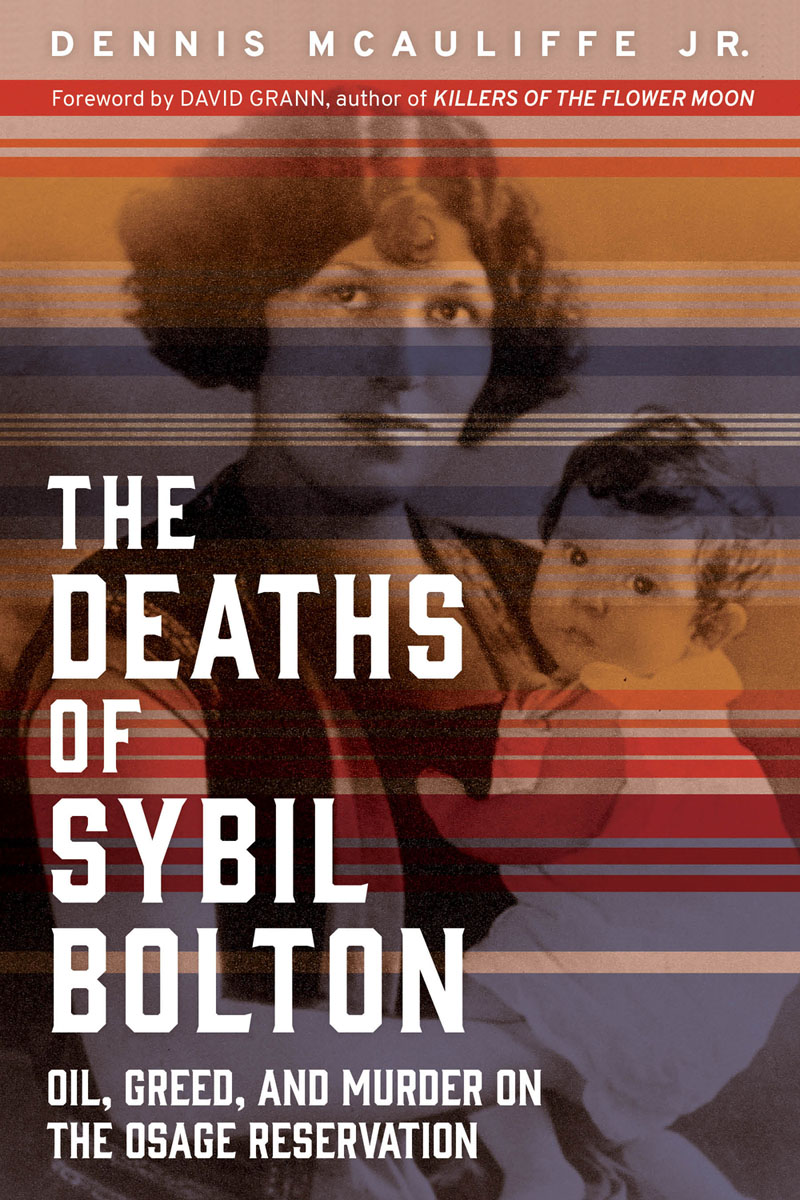
Originally published as The Deaths of Sybil Boltonby Times Books,
A division of Random House, Inc.
1994, 1999 by Dennis McAuliffe, Jr.
Foreword 2021 by David Grann
Council Oak Books paperback edition of Bloodlandpublished in 1999
This edition published in 2021 by Council Oak Books
An imprint of Chicago Review Press Incorporated
814 North Franklin Street
Chicago, Illinois 60610
ISBN 978-1-64160-416-1
All rights reserved
Grateful acknowledgment is made to the following for permission to reprint previously published material:
The Pawhuska Journal-Capital:Excerpt from article dated June 6, 1923, regarding the wedding of Sybil and Harry Bolton; excerpt from Despondent Takes Life by Shooting: Death Came Quick from November 8, 1925; excerpt from Bolton Funeral Was Held Today; Large Body of Friends in Attendance from November 12, 1925. Reprinted by permission of The Pawhuska Journal-Capital.
The Topeka Capital-Journal:Excerpts from Barber, 91, Cutting Since He Was a Little Shaver. Reprinted by permission.
Library of Congress Cataloging-in-Publication Data is available from the Library of Congress
Cover design: Sadie Teper
Cover photo of Sybil Bolton and her daughter, Kathleen Bolton McAuliffe, courtesy of the family
Interior design: Jonathan Hahn
Printed in the United States of America
5 4 3 2 1
To the real hero of this story,
My beautiful wife,
Fleur,
Who set me on this journey,
Then held us all together as it unfolded.

CONTENTS
They plucked our fruit,
They cut our branches,
They burned our trunk,
But they could not kill our roots.
MAYAN INDIAN SAYING
FOREWORD
BY DAVID GRANN
Author of Killers of the Flower Moon: The Osage Murders and the Birth of the FBI
On May 21, 1921, a thirty-four-year-old Osage woman named Anna Brown disappeared from her home in Oklahoma. Like other members of the Osage Nation, she possessed a fortune. In the early 1870s, the Osage had been driven from their lands in Kansas onto a rocky, presumably worthless reservation in northeastern Oklahoma, only to discover, decades later, that this land was sitting above some of the largest oil deposits in the United States. To obtain that oil, prospectors had to pay the Osage for leases and royalties. In one year alone, the two thousand or so registered members of the Osage Nation took in more than $30 million, the equivalent today of more than $400 million. The Osage were considered the wealthiest people per capita in the world.
After Brown disappeared, her family searched everywhere for her. A week later, her body was found in a ravine. She had been shot in the back of the head. Soon after, Annas mother, Lizzie, died of suspected poisoning. Then Annas younger sister, Rita, and Ritas husband were killedtheir house blown up while they were sleeping. And it wasnt only this family that was being targeted; other Osage were being systematically slaughtered for their oil money. Although the FBI solved a few of these murders, many were never properly investigated.
In 1991, Dennis McAuliffe Jr., an award-winning journalist and editor at the Washington Post, began to look into one of these suspicious deathsthat of his Osage grandmother, Sybil Bolton. Growing up, McAuliffe had known little about his grandmother, whom a local reporter had described as one of the most beautiful girls ever reared in Pawhuska, Oklahoma. In 1925, she was found dead, at the age of only twenty-one. McAuliffe had been told the cause was kidney disease, and so he believed until, one day, he stumbled upon evidence that this was a lie.
Drawing on his well-honed abilities as a reporter, he set out to uncover what really happened to her. He spent years tracking down lost relatives and searching through cluttered archives.
Next page
